Another sports arena? Developers, analysts not concerned about market saturation
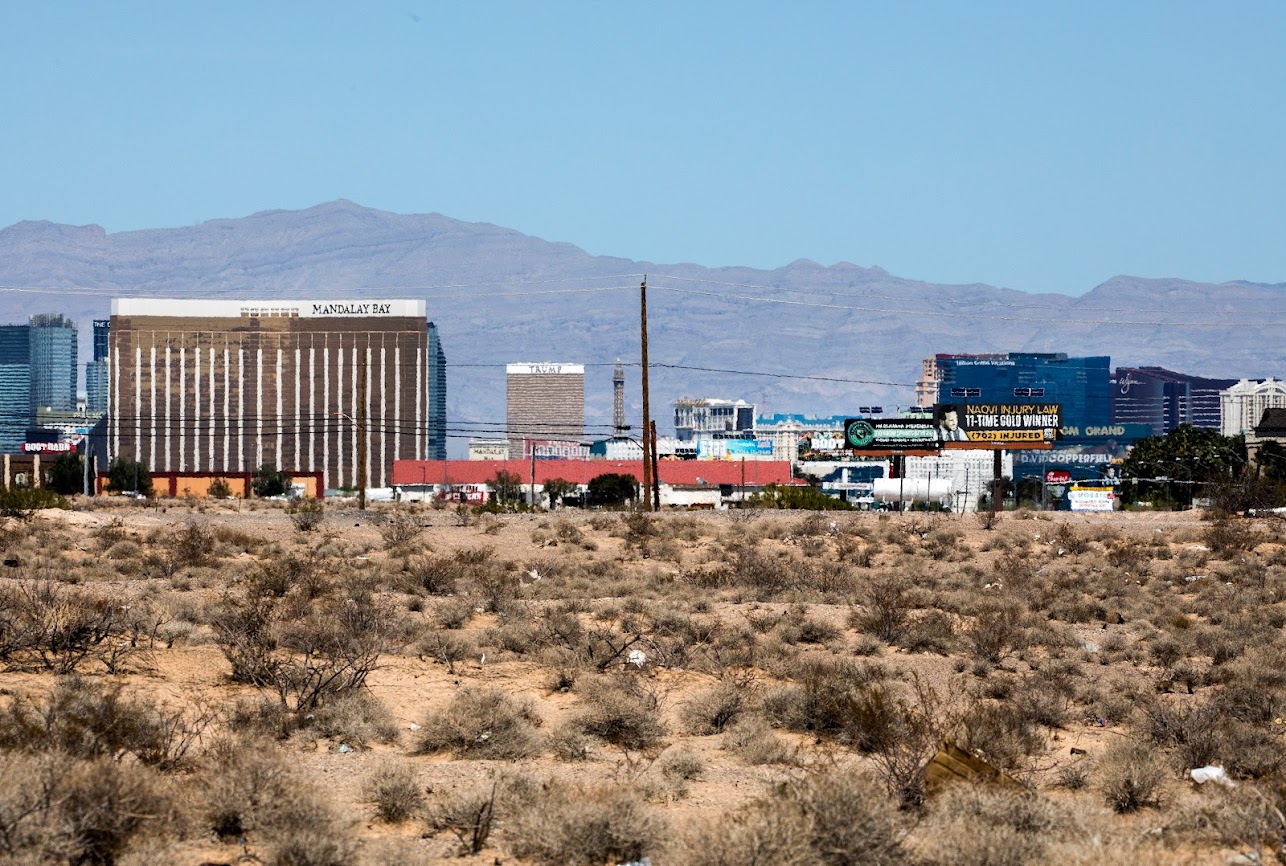
A proposed $3 billion hotel, gaming and entertainment district that would include a 20,000-seat sports and entertainment arena for an NBA team has raised questions about market saturation.
Las Vegas already has four arenas with similar attendance capacities, including the 20,000-seat T-Mobile Arena that sits in the shadow of several Strip mega-resorts and whose primary tenant is the NHL’s Vegas Golden Knights.
The March 30 announcement that Los Angeles-based Oak View Group was planning to build a privately financed complex on 25 acres near the intersection of Las Vegas Boulevard and Blue Diamond Road – roughly 3 miles south of Mandalay Bay, which is considered the Strip’s southern border — ran into some skepticism.
However, Oakview is headed by founder and CEO Tim Leiweke, a veteran local developer and sports executive who has overseen the development of multiple arena projects in the United States and Canada. In the past six months, Oak View opened two sports arenas in Seattle and New York that house NHL teams and a smaller venue for the University of Texas in Austin.
“Tim is connected, he knows what he’s doing and he’s been very successful,” said Steve Hill, CEO of the Las Vegas Convention and Visitors Authority. “Tim is a consummate professional, and he's got a resume — not only on how to build the facility, but how to fill it. If he says he’s going to build an arena, it's going to be successful.”
The high praise from the city’s chief tourism official comes as analysts are offering cautious optimism, pointing out that Las Vegas has plenty more events it could draw — boosting visitation — if a glitzy new venue existed. The proposed project, which has yet to break ground, follows a pattern of a new arena dotting the Southern Nevada landscape every decade or so, at least while demand lasts.
The arena would host live music and sporting events and Oak View executives said the venue would be built with the specifications required to house an NBA franchise.
Former Las Vegas Raiders President Marc Badain, who is serving as partner and consultant with Oak View, said in an interview with The Nevada Independent that the development will happen given Leiweke’s history and experience.
Badain said public financing is not part of the Oak View development, adding that private financing and the arena’s profitability are not contingent on an NBA team coming aboard.
“Tim has done this before, where they built a venue without an anchor tenant,” Badain said. “The governing body, whether it's the NBA or NHL, will assess the market and the venue and decide if they want to award a team there or move a team there. That's not up to us. Tim is following the blueprint that he's done in the past, and he's going to build a venue that's NBA-ready.”
One gaming analyst, who asked not to be named, said there will be skepticism about the entire project until financing is approved and operating partners for the hotel, casino and other major entertainment venues are named, including the owners of an NBA team.
Hill acknowledged that at some point, Las Vegas leaders will say “that’s one arena too many.” But he doesn’t believe it’s any time soon.
Several analysts said the proposed venue has enormous potential.
Macquarie Securities gaming analyst Chad Beynon said in an email the arena market is showing signs of reaching its capacity limits or saturation point.
“However, a new arena would certainly be a main draw for headliner acts, sporting events and other events that can’t be served in some of the older arenas,” Beynon said. “Las Vegas will continue to remain relevant in the growth of sporting events, concerts and other entertainment given its embedded infrastructure and convenience.”
Brendan Bussmann, managing partner of Las Vegas-based advisory firm B Global, said Las Vegas has seen numerous arena projects announced that were never constructed. He suggested the timing for another arena could be advantageous, especially if an NBA team is involved.
“This would be a significant investment in the destination and expand the South Strip’s footprint,” Bussmann said. “The number of venues in Las Vegas continues to grow and we need to make sure that demand matches supply as some of these new assets come aboard.”
MGM Resorts International Vice President of Entertainment Dan Quinn, who oversees the operations of the company’s three arenas including T-Mobile, would not comment directly about the proposed Oak View project.
But he views the concerns with market saturation from a competing arena as a similar question that often arises when new resorts open or hotels are expanded, increasing room capacity. Over time, he said, occupancy and room rates continue to increase.
“When we opened T-Mobile, there was speculation about what would happen at both the MGM Grand Garden and the Michelob Ultra Arena (at Mandalay Bay),” Quinn said. “Ultimately, those venues have remained just as busy. I think what a lot of people don't realize is how many events we actually say no to just because of the lack of availability.”
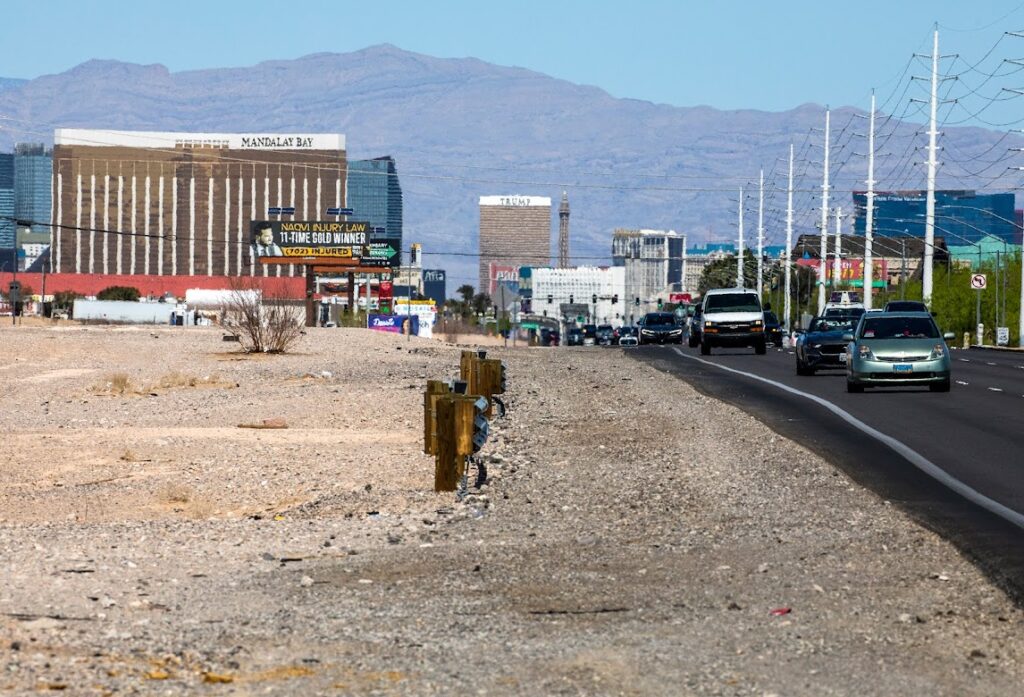
‘A blank slate’
Oak View controls 25 acres of a roughly 66-acre site that is bordered by Las Vegas Boulevard to the east, Blue Diamond Road to the south and Interstate 15 to the west. The north end of the site straddles an unfinished portion of Robindale Road that could eventually be built to run underneath I-15.
Las Vegas-based real estate investment company Prospect Street owns the site’s remaining 41 acres.
North of Robindale is 110 acres controlled by Fortress Investment Group, whose co-CEO Wes Edens owns Brightline, a high-speed passenger rail line. A portion of the land is designated to house a station for a decades-long planned high-speed train that would connect Las Vegas and Southern California. Another portion of the site would include a stadium to house a Major League Soccer franchise for Las Vegas.
Leiweke, who wasn’t available for comment, said in a statement that the 176 acres of undeveloped land “represents one of the few areas of potential future growth of the gaming and entertainment corridor.”
Hill agreed that the scope of the entire site and the multiple developments – a hotel, casino and arena, the high-speed train station and a Major League Soccer stadium – would extend the resort corridor further south.
“It’s a blank slate right now, and the folks who are doing the work there know what they're doing,” Hill said.
During a tour of the site last week, Badain said the arena would be located at the southern end of the parcel near the intersection of Las Vegas Boulevard and Blue Diamond.
“There is still a lot of work to do, such as what the campus and what the integrated resort and arena are going to look like,” Badain said, adding that groundbreaking isn’t expected for at least a year. “We have to get all the approvals from the county and finance it. So there's obviously a tremendous amount of work ahead of us. But the foundation is there.”
Badain, who was instrumental in the development of the nearly $2 billion Allegiant Stadium and the Raiders’ move from Oakland to Las Vegas, said the arena wouldn’t open until 2026. Also, the developers don’t have a commitment from an NBA franchise to move to Southern Nevada, nor has the league announced any plans for expansion.
Nevada lawmakers in 2016 approved $750 million in public financing for Allegiant Stadium through an increase in hotel room taxes.
Gov. Steve Sisolak said he met with Badain and the developers on several occasions recently and agreed with their assessment the arena project could be done without an NBA team. Sisolak, who was supportive of the $750 million in public money used for Allegiant, is happy the project will be financed through private channels.
Meanwhile, the Oakland A’s are exploring a potential public-private partnership for a $1 billion stadium in the resort corridor — one of five yet-to-be-disclosed sites if the Major League Baseball team decides to relocate to Las Vegas.
“There isn't public funding for another stadium, but there are other things that can be done that can help on the funding,” Sisolak said. He suggested the location could be declared a tax improvement district or possibly see public money for infrastructure development.
A well-established developer
Leiweke led the development in 1999 of downtown Los Angeles’ LA Live, an entertainment district that includes JW Marriott and Ritz-Carlton hotels, numerous restaurants, the Microsoft Theater and Crypto.com Arena, formerly known as the Staples Center. The sports venue houses the NBA’s Los Angeles Lakers and Los Angeles Clippers, the WNBA’s Los Angeles Sparks and the NHL’s Los Angeles Kings.
Last year, Oak View opened the $1.2 billion, 18,100-seat Climate Pledge Arena in Seattle, which is home to the NHL’s Seattle Kraken. The project was an extensive renovation of an older sports facility that is touted as the world’s first net-zero carbon certified arena. Oak View also opened the $1.1 billion UBS Arena on the grounds of the Belmont Park Racetrack on Long Island. The 17,255-seat multi-purpose arena houses NHL’s New York Islanders.
And last week, Oak View opened the $388 million Moody Center at the University of Texas in Austin, which seats 10,000 spectators for basketball and 15,000 attendees for concerts and other events.
South Point Arena and Equestrian Events Center General Manager Steve Stallworth joined the chorus of praise for Leiweke. He has known the developer more than 20 years after Leiweke tried to hire him to run a Southern California arena he was building at the time.
“He’s the king and whatever he builds. It will be done in a way that is great for the area,” Stallworth said.
Badain, who left the Raiders before the start of the 2021 season, said he was attracted to Oak View’s arena proposal because the company controls the site and Leiweke’s long track record of success.
They first met in 2015 during the approval and development process for Allegiant Stadium. Leiweke was advising the Adelson family, majority shareholders in Las Vegas Sands who were initial financial supporters of Allegiant Stadium.
Even without an NBA team, Badain said the demand for another venue is real because “Las Vegas attracts 150,000 people a day on average” and the market continues to expand.
He said there is also enough entertainment programming available to attract visitors and residents to the arena. Badain noted the career of Oak View co-founder Irving Azoff, an award-winning entertainment and music industry executive who has represented several Grammy-winning performers.
“When looking at live entertainment, it's really the one place where musical acts and artists can generate income,” Badain said. “You can fill those venues up. There's a need for another venue and there's a need for the best venue in the world.”
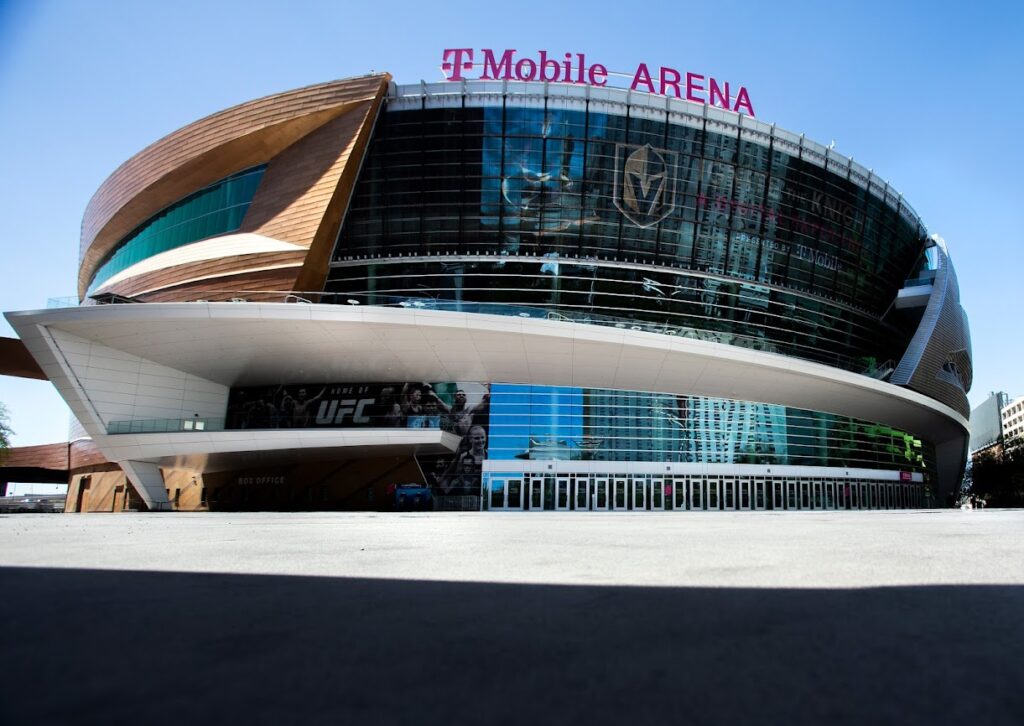
Consistent arena development
Badain said arena expansion in Las Vegas has continually evolved since the 1980s, slowed only by the recession in the mid-2000s.
“Look at the trajectory of growth and development in Las Vegas, and not just population growth, which has obviously been exponential over the last three decades,” he said. “Look at the growth of the live entertainment market and needs and then juxtapose with what's gone on here.”
Thomas and Mack Center was the first major arena project in Las Vegas when it opened in 1983 at UNLV to house the Rebels basketball team. With more than 19,000 seats, the arena was a vast improvement beyond the 6,000-seat Las Vegas Convention Center, which was eventually torn down.
In 1985, Thomas and Mack landed the National Finals Rodeo, and the 10-day championship event has been held there every year except for 2020 when it was moved to Arlington, Texas, because of the pandemic.
MGM Resorts opened the 17,000-seat MGM Grand Garden in 1993, and the facility has housed professional and college sporting events, championship boxing, UFC fights and hundreds of concerts and special events.
In 2005, MGM Resorts acquired Mandalay Bay Events Center as part of its $7.9 billion buy-out of Mandalay Resort Group. The 12,000-seat venue, now named Michelob Ultra Arena, hosts concerts and is the home court for the WNBA’s Las Vegas Aces, which the casino company bought in 2018.
More than a decade later, in 2016, MGM Resorts — in a partnership with entertainment giant AEG —opened the $375 million T-Mobile Arena. In addition to the Golden Knights, the arena has become a popular landing spot for concerts, the PAC-12 college basketball tournament and special events. Next year, T-Mobile will host the West Regional for the Men’s NCAA basketball championship.
When T-Mobile opened, then-MGM Resorts CEO Jim Murren said he was actively pursuing an NBA franchise to relocate to Las Vegas and play at the arena, which was built to NBA specifications.
That idea seemed to be put to rest last year, though, when MGM sold its ownership in the WNBA’s Aces to Raiders owner Mark Davis, who, according to sources, wants to either build his own arena or move the team to another arena in Southern Nevada. A spokesman for the Aces could not be reached for comment.
Badain said by the time Oak View’s arena opens in 2026, a decade will have passed since T-Mobile opened.
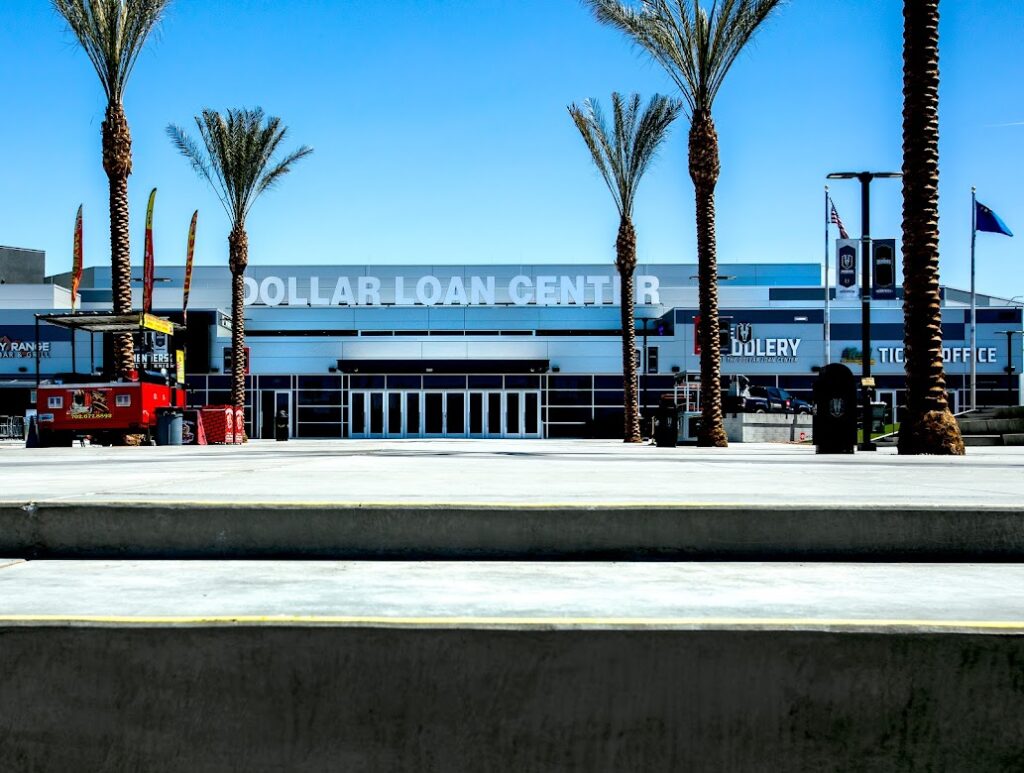
Competition in the market
Quinn said all three MGM facilities are flexible event spaces. Michelob Ultra Arena and the Grand Garden are often used for conventions and tradeshows because of their flexible designs.
“Everybody sees the concerts and sporting events but those locations are not programmed for any one type of content,” Quinn said. “One of the most unique factors of the Grand Garden Arena is the entire lower level can retract to create the flexible space that isn't replicated by any other venue.”
The South Point’s Stallworth said a large arena roughly 2 miles north would actually be a boost for the hotel-casino in filling rooms.
As for the equestrian center, the 4,600-seat venue – which includes four small pavilions – has booked 44 weeks of events throughout the year. During the National Finals Rodeo, the Equestrian Center hosts minor events associated with the competition. The arena can also be equipped with a hardwood floor for high school and small college basketball tournaments.
“We’re busy,” Stallworth said. “We bring in events to fill hotel rooms, and honestly, that type of facility close in proximity is good for the South Point.”
Before Stallworth opened the Equestrian Center for South Point Owner Michael Gaughan, he opened the 9,500-seat Orleans Arena when Gaughan owned the Orleans Casino Resort before it was acquired by Boyd Gaming.
The arena has been a home for minor league hockey, hosting the now-defunct Las Vegas Wranglers of the ECHL for 11 years. The arena was home to the American Hockey League’s Henderson Silver Knights until March when the team moved into its permanent facility, the 5,600-seat Dollar Loan Center Arena in Green Valley.
Orleans Arena hosted the college basketball championship tournaments for the West Coast Conference and the Western Athletic Conference the past few years and is currently hosting the Men's World Curling Championships over the next four days.
A Boyd spokesman for Boyd declined to comment on the Oak View project.
The Dollar Loan Center Arena’s opening gave Southern Nevada three smaller venues. The City of Henderson picked up $42 million of the facility’s $84 million construction cost, and Foley Entertainment Group is the arena’s operator.
In addition to the Silver Knights, the arena is home to the Indoor Football League’s Vegas Knight Hawks and hosted the Big West Basketball Championships in March.
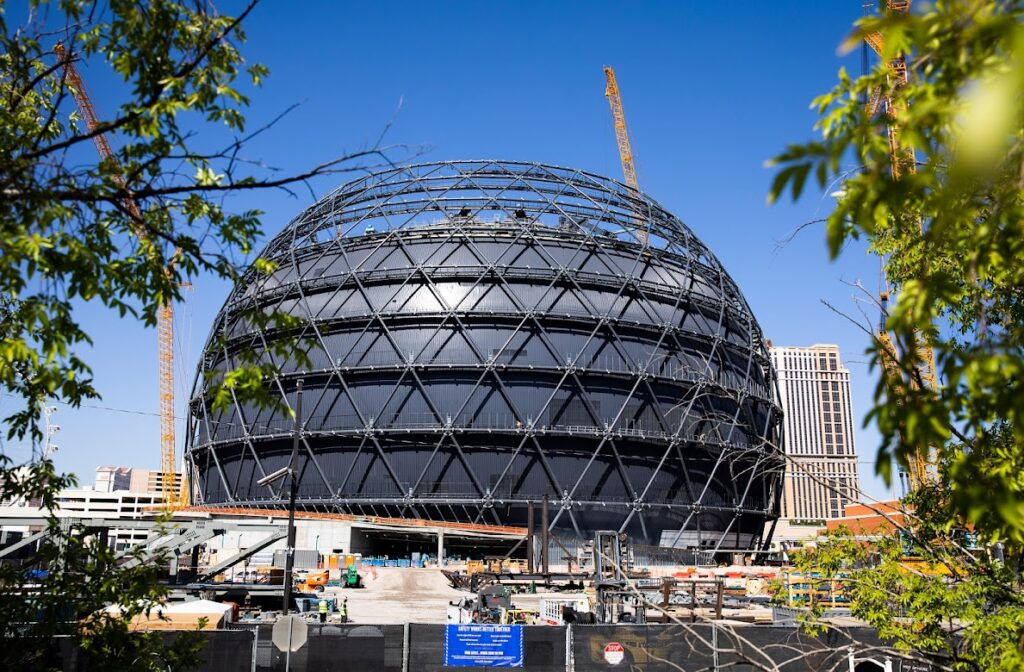
More on the way
The most visible arena project in progress in Southern Nevada is the under-construction $1.9 billion MSG Sphere, which is geared toward live entertainment and special video productions. The venue is expected to open in the last half of 2023.
New York-based Madison Square Garden is developing the 17,500-seat venue that will be the largest spherical structure in the world at 366 feet tall and 516 feet wide. Inside, a 160,000-square-foot LED screen will surround the audience in an immersive visual environment.
A spokesman said the Sphere is not designed as a sports arena but can offer various forms of live entertainment.
On the north end of the Strip, plans have been floated since 2010 for All Net Resort & Arena. The proposed 23,000-seat retractable roof arena has been touted by project developer and former UNLV basketball standout Jackie Robinson as a facility that would attract an NBA franchise.
However, in the last decade, T-Mobile and Allegiant Stadium were built.
In February, Robinson told the Las Vegas Review-Journal that a Florida-based company, Active Capital Holdings, was committing more than $4.7 billion toward the project and Robinson said the project would begin in July and would include two hotels and other amenities.
An arena was considered to be part of Station Casinos’ Viva project, a planned $10 billion, 100-acre development along Tropicana Avenue just west of Interstate 15. The project was scrapped in 2009.
Red Rock Resorts spokesman Michael Britt said several arena-type projects have been considered for the site, calling the location, “one of the largest remaining developable assemblages in the Las Vegas resort corridor.”
(Reporters Jacob Solis and Da Yeon Eom contributed to this story.)
